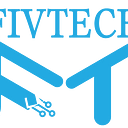How I Reversed My Diabetes Using New Technology and Data Science
Highly individualized medical interventions can be driven by data science and statistics.
I received a Type 2 Diabetes diagnosis at the beginning of 2021. My HbA1c, a measurement of the average blood sugar levels over the previous three months, was 49 (6.6 in US metric) after a blood test. In the UK, an HbA1C level of 41 or less (5.7%) is regarded as normal, 42–47 (6.0–6.4) as “at risk of Type 2 diabetes,” and 48 (6.5) or above as “diabetic.” I was not surprised by the diagnosis because I had specifically requested testing. I had intermittently been performing at-home prick tests, I worked sedentary hours, I was obese, and I had a family history of T2 diabetes.
Even though this result was only on the cusp of becoming diabetic, receiving a formal diagnosis of the disease was a wake-up call, and I was relieved to do so in time. If nothing is done, it will only become worse. I had to decide whether to take action now or commit to managing my chronic disease in the future with medication and a chance that my health issues may get worse.
I no longer have diabetes today. My HbA1c level is a respectable 38 (5.6). I’ve shed 10% of my body weight and am now 10% fitter and within a healthy weight range.
I was able to do this by determining my own unique road to health utilizing technology and data science, and I want to detail the three stages here for the benefit of others.
Phase I — Aggressive action motivated by electronic monitoring and analysis
My life was revolutionized by a suggestion the diabetes nurse gave to me at a follow-up consultation after my diagnosis. She advised me to buy a continuous glucose monitor (CGM), a cool gadget that you wear on your arm or stomach for 14 days and that continuously measures the amount of glucose in the interstitial fluid that lies just below the surface of your skin. I was so enthusiastic about this that I immediately went out and purchased two of these gadgets so I could continuously track my blood sugar levels for a month. I kept track of the approximate amount of carbohydrates and fat I consumed at each meal and snack during this time, as well as the times I drank alcohol (the only alcoholic beverage I consume is wine, therefore I documented each…
